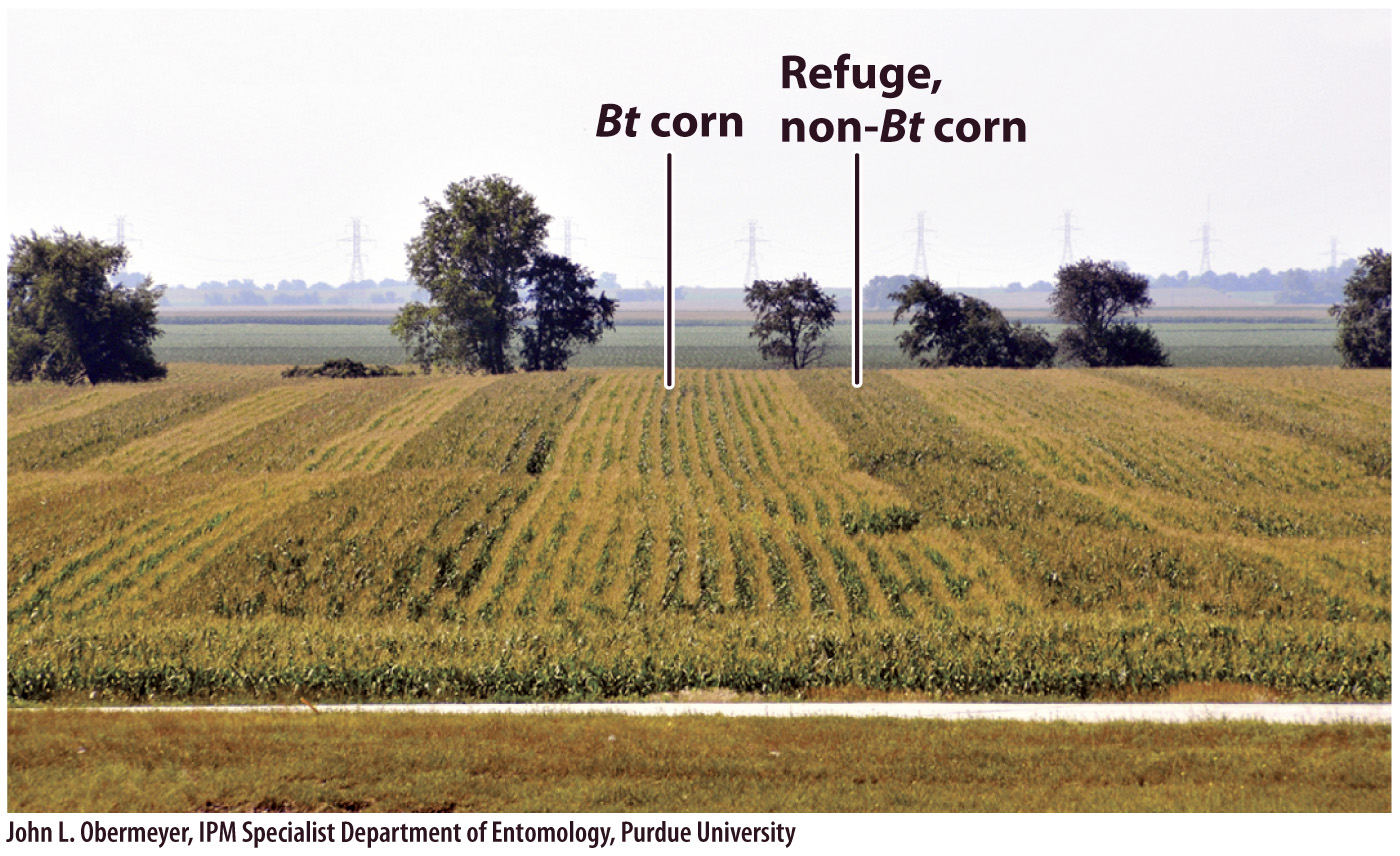CASE 6 AGRICULTURE: FEEDING A GROWING POPULATION
Can modifying plants genetically protect crops from herbivores and pathogens?
The density-
The production of pesticides and herbicides increased dramatically in the second half of the twentieth century. Together with irrigation and fertilizers, these compounds are important contributors to the increased yields of the Green Revolution. However, large-
During the 1980s, farmers applied increasing amounts of pesticides to rice paddies in South Asia, yet crop losses continued to increase. This dangerous course was reversed by the introduction of a program first developed in the 1950s. Farmers in this program carefully determine what pests are actually present, whether or not they are at damaging levels, and whether or not there are natural predators of the pests. Only after understanding the ecology of the farm do farmers remove pests, starting with mechanical means, then biological control using natural predators, and, only as a last resort, industrial pesticides. Farmers using this approach, called integrated pest management, can minimize routine pesticide use and therefore prevent pest species from evolving resistance.
Another approach is to improve the ability of crops to defend themselves against herbivores and pathogens through breeding and genetic modification. Crop breeders must emulate—
Crop breeding is a powerful way to alter the genetic makeup of cultivated species. However, because it relies on sexual reproduction, crop breeding is limited to the genetic diversity that exists within varieties that can interbreed. In contrast, Rhizobium radiobacter allows scientists to introduce specific genes found in distantly related organisms into cultivated species. One of the first commercial uses of this technology was to introduce chemical defenses from a bacterium into crop plants.
Bacillus thuringiensis (Bt) is a soil-
The introduction of Bt crops markedly reduced the application of pesticides, to the benefit of both farmworkers and the environment. However, the danger of planting Bt-

If there is one practical lesson to be learned from our experience with Bt, it is that pathogens and herbivores will continue to evolve new ways of circumventing the defenses of crop plants. Thus, agriculture will continue to require new forms of crop protection. While the use of chemical pesticides will probably remain widespread, crop protection will increasingly be based on the application of genetics, through both crop breeding and biotechnology. In either case, success will depend upon the availability of existing genes honed by natural selection. Without access to genes involved in pathogen recognition (R genes) or in the production of chemical and mechanical defenses, we will have the tools, but not the raw materials, to protect our crops.
In some cases, crop protection will rely on genes from distantly related organisms, as illustrated by Bt. Commonly, however, defense strategies for crops will rely on genes from other plants, often ones that are closely related. For example, the specific R genes used for pathogen recognition typically function only within a single species or closely related species. Thus, to develop potatoes that are resistant to the protist Phytophthora infestans that causes potato blight, scientists are transferring R genes from a wild relative of potato. The continuation of such efforts requires a commitment to safeguarding the genetic diversity found in natural populations of crop species and their close relatives. Only by tapping into these natural genetic resources can breeders produce crops that stay one step ahead of the constantly evolving threats of pathogens and herbivores.